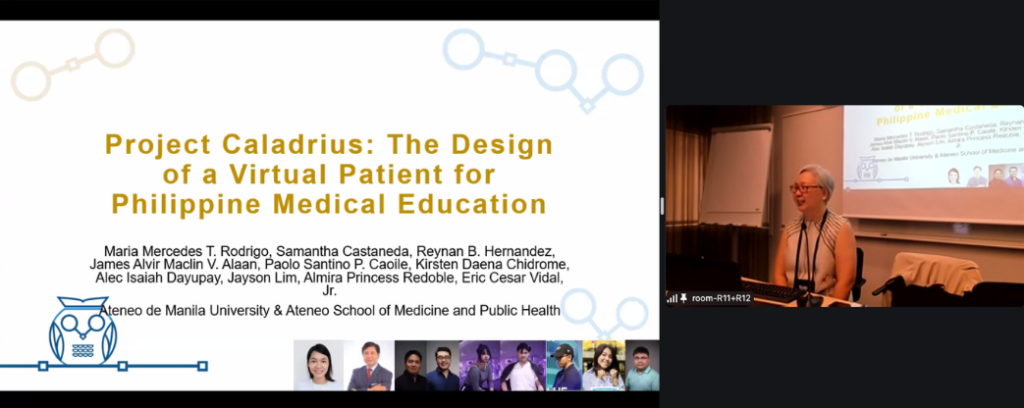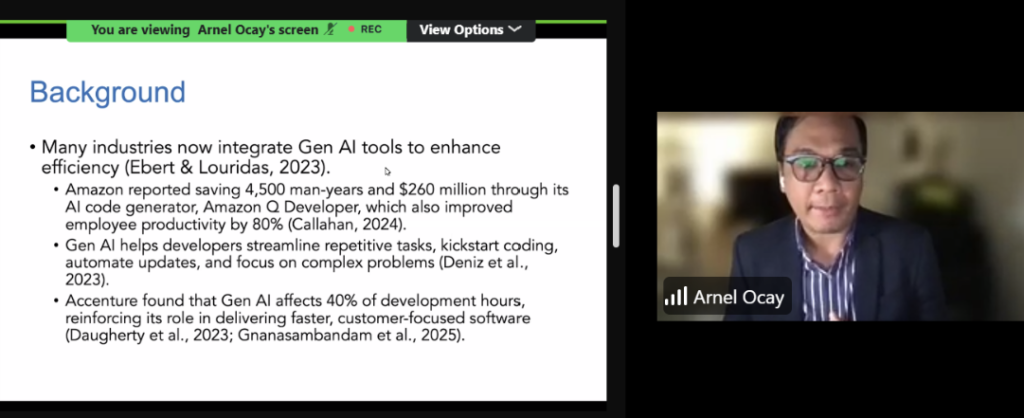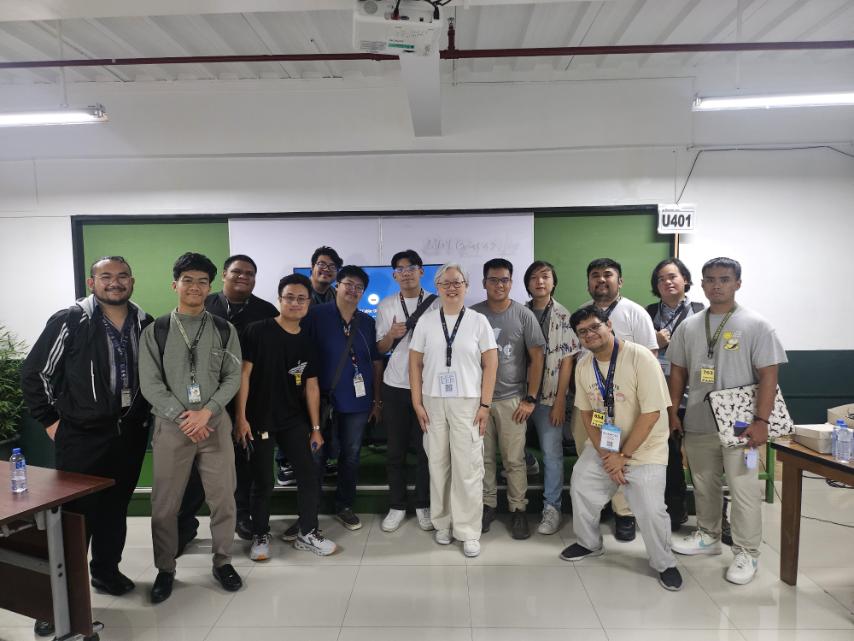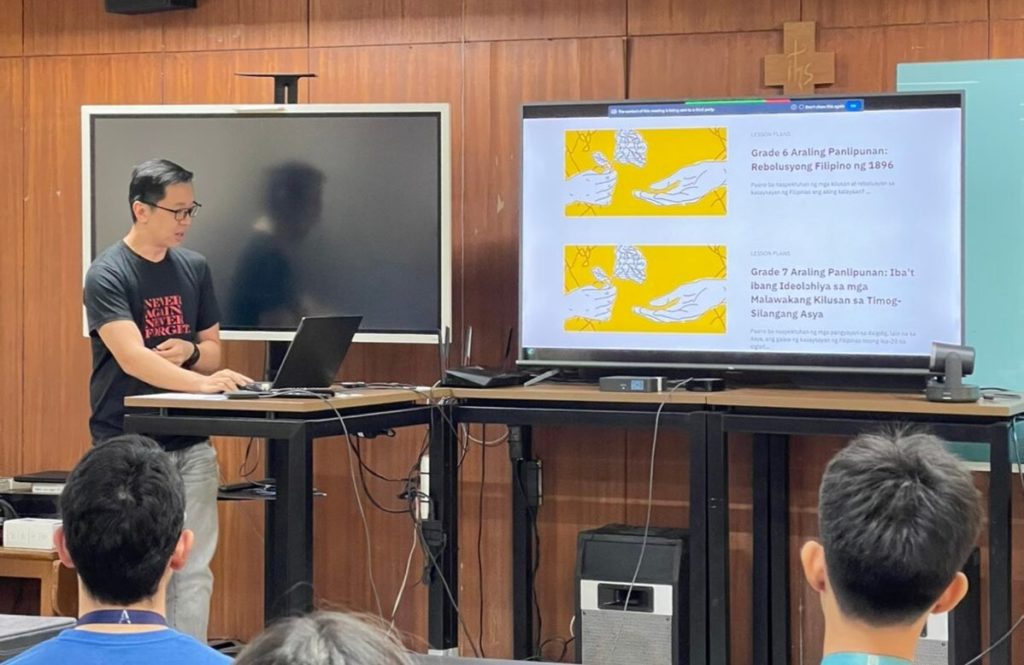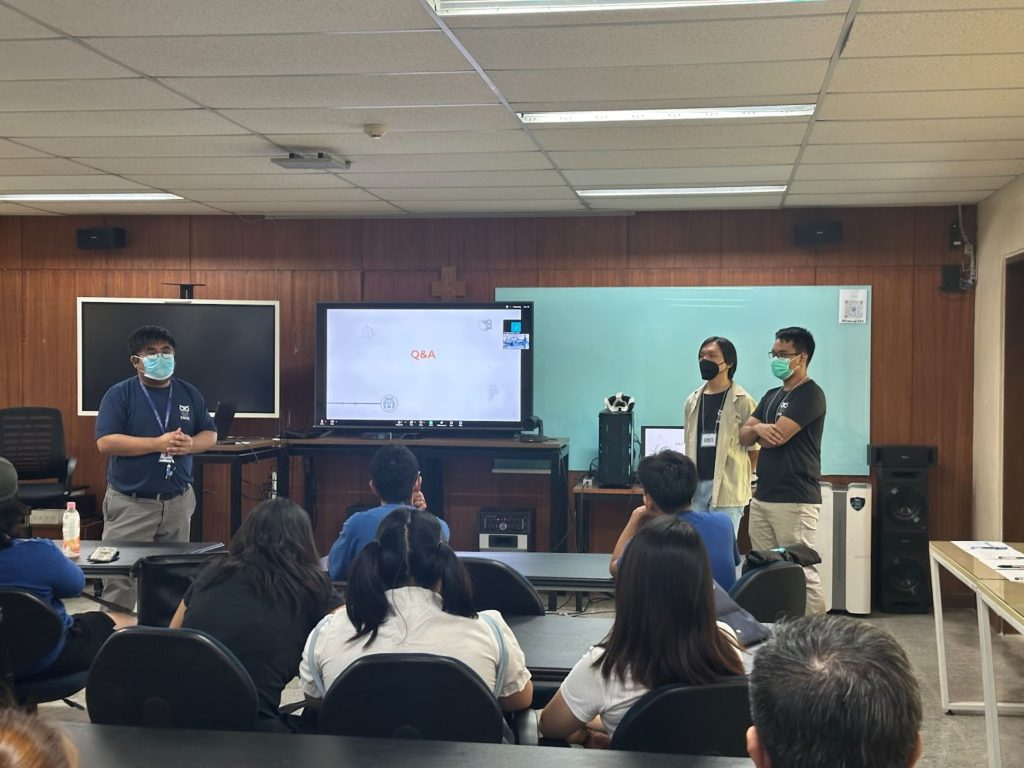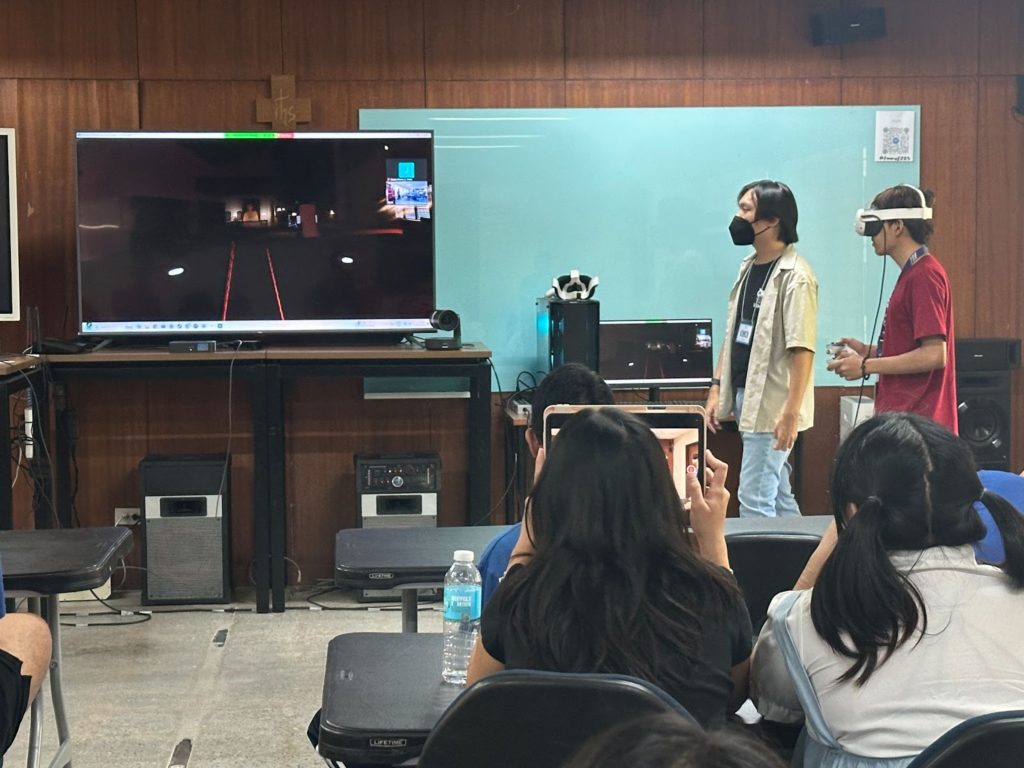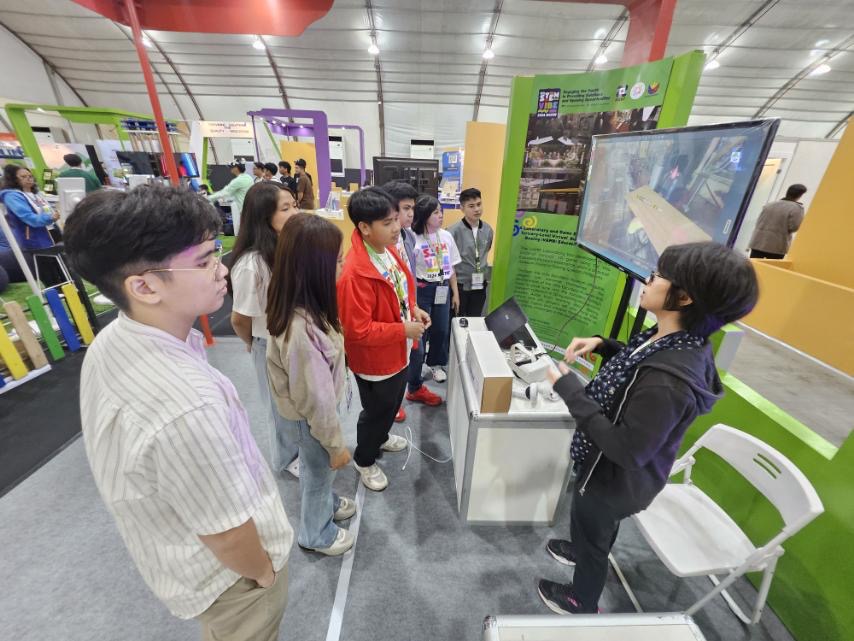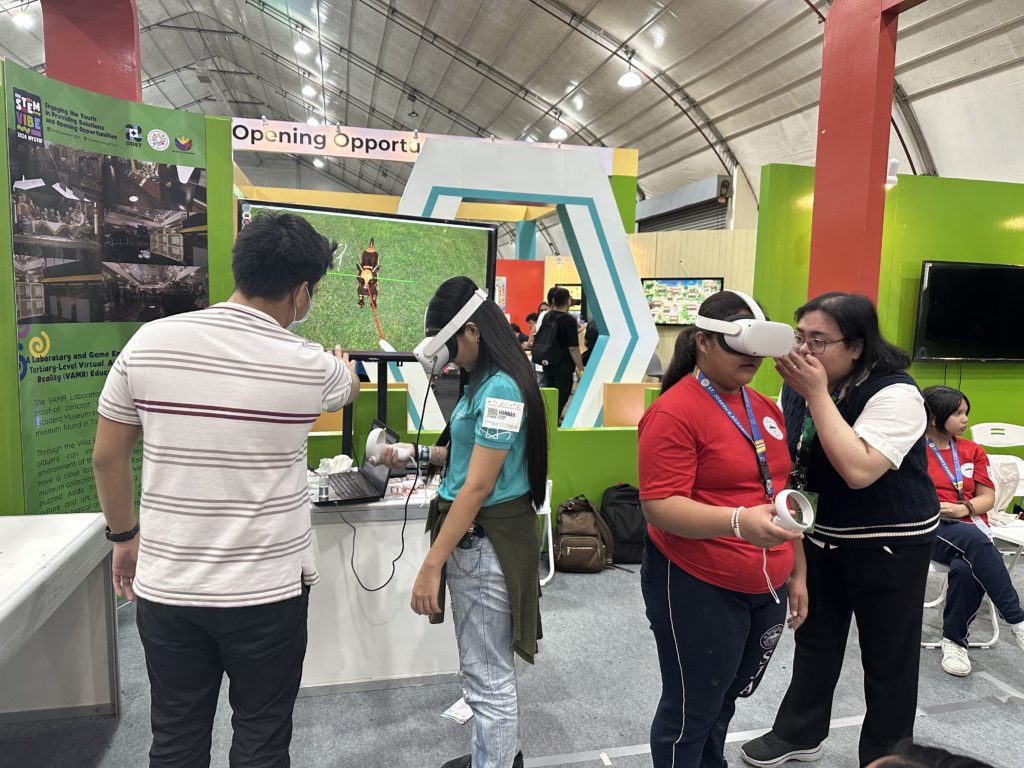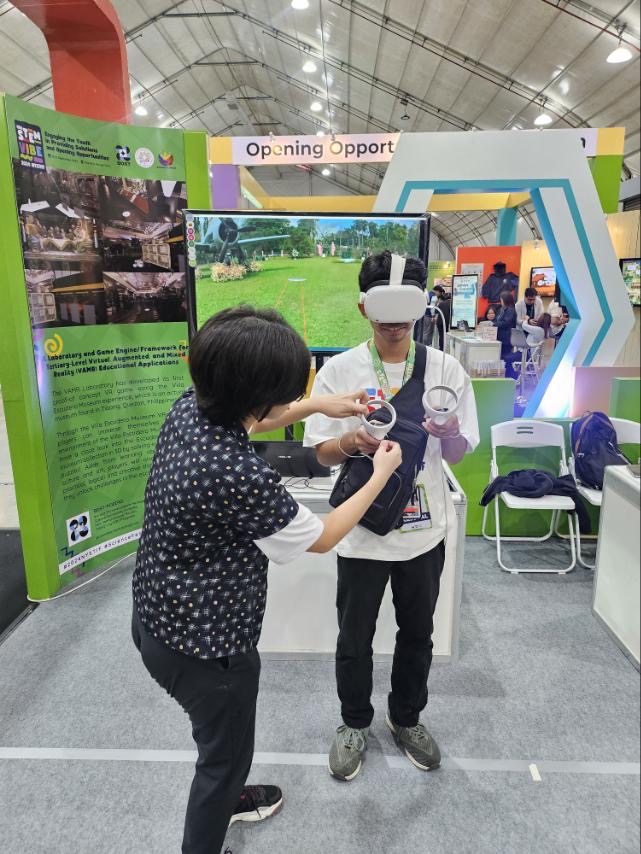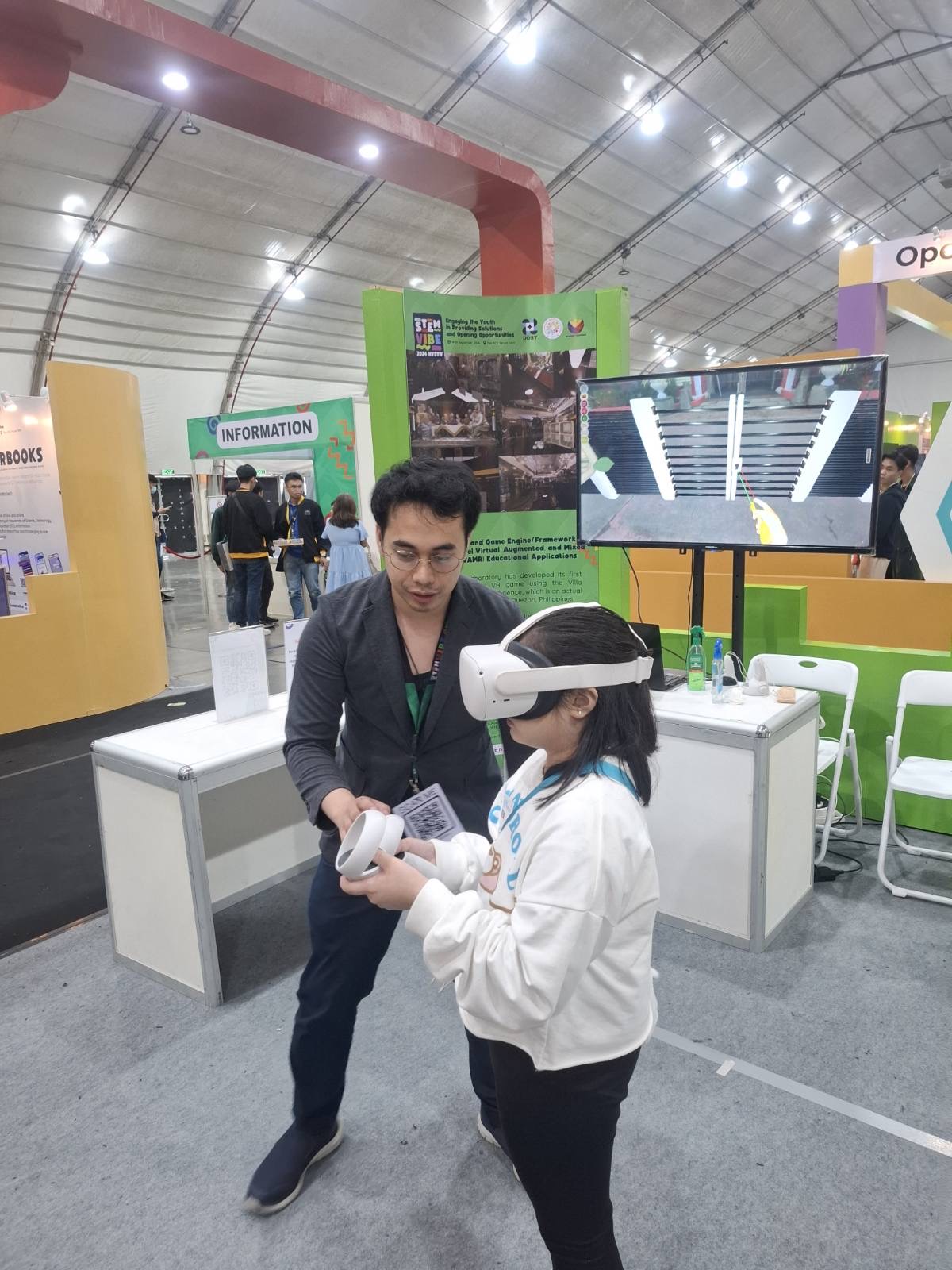by Dominique Manahan
QUEZON CITY, PHILIPPINES – Ateneo de Manila University’s (ADMU) Ateneo Laboratory for the Learning Sciences (ALLS) and Virtual, Augmented, and Mixed Reality (VAMR) Laboratory, participated in Ateneo de Manila University’s EDSA@39 Commemoration last March 31, 2025 held in collaboration with the Ateneo Martial Law Museum and Library (AMLML) at Faura Hall, Ateneo de Manila University.
As part of a DOST-PCIEERD-funded research, the ALLS and VAMR Laboratory partnered with AMLML to develop an escape-room style, VR game intended primarily to showcase the capabilities of the VAMR Laboratory’s Ateneo Virtual Reality Escape (AVRE) framework, while producing tertiary-level educational content. During the EDSA@39 Commemoration, the teams wanted to showcase the game design process of said VR game, whose game’s content focused on activities, icons and events during the Martial Law era in the Philippines.
After welcome remarks from Dr. Didith Rodrigo, ALLS Head and VAMR co-head, Mr. Galvin Ngo, one of the AMLML fellows, began the talk by briefly discussing the history of the museum and its three pillars, which are Mag-aral (study), Magturo (teach), at Manindigan (stand firm). He emphasized the discussion on the second pillar, magturo, noting that the AMLML intends to “encourage ongoing discourse, dialogue, and reflection as part of the nation’s consciousness.” Thus, he cited various examples in which they are doing that through making teacher guides, lesson plans and virtual games, available through the Ateneo Martial Law Museum and Library website. He then passed the presentation floor to Dr. Eric Vidal, VAMR co-lead, who spoke about the partnership’s goals under the DOST-PCIEERD grant, the VAMR technology and sample works so far.
Mr. Galvin Ngo (left, in black) shows the sample lesson plans available in the AMLML website.
After the AMLML and VAMR Laboratory introductory talks, Mr. Alvaro Pato led the presentation of the game design process both teams went through for the VR game entitled, “Heritage Hero: The Secrets of the “Golden Era.” He began by providing a quick overview of the project, and stated the project requirements, which are the following: (1) The game must make full use of the Ateneo Virtual Reality Escape (AVRE) Framework, (2) The game would be short, being only an hour long, and (3) The game should be open ended. The player will decide whether or not Martial Law was a Golden Age.
Dr. Eric Vidal (left, standing) facilitates the question and answer portion. In support are the VAMR developers, Kenneth Ko (right, in beige) and Alvaro Pato (right-most, in black)
Alvaro shared how the process started with conceptualization, where the AMLML team proposed eight (8) topics which they deemed important for the students to know about the Martial Law era. Given the project requirements, there was a negotiation between the VAMR and AMLML teams on which topics to prioritize and the tasks which can be done by the player, in relation to the learning outcome intended and AVRE Framework capabilities. Then, he discussed the final game design that came about after a series of brainstorming sessions with AMLML.
One of the participants (right-most, in red) tries walking through the VR game.
After the short presentation of Alvaro, Mr. Kenneth Ko showed a walkthrough of the actual game setting (i.e. inside the abandoned mansion) by streaming his view as he used an actual VR headset. A few participants were able to try it out, where some did so for the first time. Mr. Oliver Quintana closed the session by appreciating the participation of everyone.
The VR game is currently being developed, with its first campus user testing to be scheduled by May 2025.



